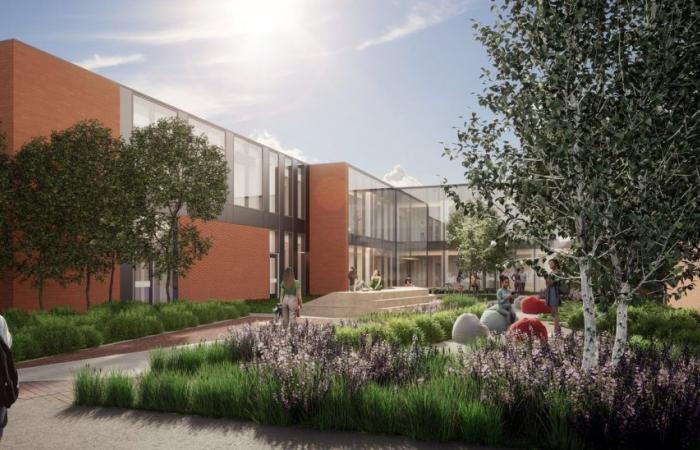MONTREAL — Having up-to-date units in youth centres can have positive impacts not only for young people, but also for the retention of educators who dedicate themselves to these young people.
While several facilities of the Direction de la protection de la jeunesse (DPJ) are dilapidated in Quebec, the Dominique-Savio Rehabilitation Centre for Youth with Adjustment Difficulties, located in the Ahuntsic district of Montreal, will be renovated. Construction should begin this week.
There is a staff shortage among youth centre educators, as in many other social services professions. The renovation of their workplace could have a positive impact on employee retention. “I think it will improve the work environment, which is otherwise very good,” said Julie Lauzon, assistant director of the youth program at the CIUSSS Centre-Sud.
The $68.9 million project will include the construction of a new wing that will house four living units as well as the redevelopment of two units that will now meet the criteria for accommodating adolescent girls placed under the Youth Criminal Justice Act.
“It’s a unit that will be used, among other things, for young people in closed custody, with locked doors, who require slightly higher levels of security than the rest of our clientele,” said Martine Richer, head of rehabilitation at the CIUSSS Centre-Sud. “In Montreal, that doesn’t currently exist for girls, so we needed to have a secure unit on our site.”
Currently, there are 65 teenage girls from Montreal living in a closed living unit in Laval. When the redevelopment project is completed, which is scheduled for 2026, they will be repatriated to Montreal, to the Dominique-Savio centre.
This center was built in 1960 and accommodates a clientele of boys and girls aged 6 to 11 as well as teenage girls aged 12 to 17.
Recommendation of the Laurent Commission
The beginnings of the Dominique-Savio centre renovation project began in 2008. The project has often been modified, until recently, to respond to the recommendations of the Laurent Commission: the special commission on children’s rights and youth protection that was created following the tragic death of the little girl from Granby five years ago. The project responds in particular to the need to humanize the Commission’s rehabilitation services.
“The meaning of the project is really to offer environments that are warmer than what already exists. Units that will be better units for these young people, which correspond much more to what rehabilitation has become over time. (…) What we want is for our young people to be as little institutionalized as possible,” said Ms. Richer.
The teenage girls will also be able to stay in the centre during the work. “We are very happy not to have to uproot young people and children who have already experienced several movements,” commented Ms. Lauzon.
The young people also participated in the development of the plans with the architects. They were asked: if there was an ideal housing environment for them, what would it look like?
“Most of our units currently have closed doors, they are somewhat enclosed spaces — which allow us privacy, there are other ideas behind that — but here, the young people told us: ‘in a real house, it’s not true that the living room, the kitchen, are all locked, closed with a door. We would like to have more open areas, spaces that would make us think we are in a house,’ said Ms. Richer. We were really inspired by that, even in our furniture, in the colours, the choice of materials, etc.”
In the new wing, the structure has been designed to avoid having young people go through reception, which “always reminds them that they are in a youth centre”.
“So there is this kind of trust and freedom that makes us feel at home and perhaps a little less confined,” says Ms. Richer.
There is also the addition of a new gym and a relaxation room like those found in the other units.
Ms. Lauzon believes that this will make a difference for young people. She explained that in many cases of runaways, the young person simply wants to be in a place where they can take a step back from a situation. “I don’t know if this will reduce the number of runaways, but certainly, our young people, what they want when we ask them the question, is to feel a little like they are at home. And what we want in our vision is to offer them an environment that will be much less institutionalized,” said Ms. Lauzon.
—
The Canadian Press’ health content is funded through a partnership with the Canadian Medical Association. Editorial choices are solely the responsibility of The Canadian Press.
Katrine Desautels, The Canadian Press






